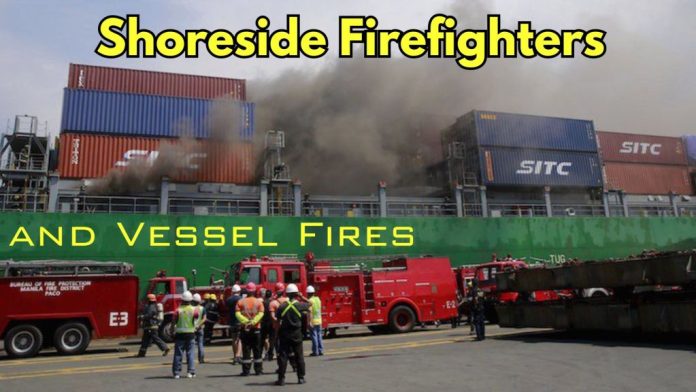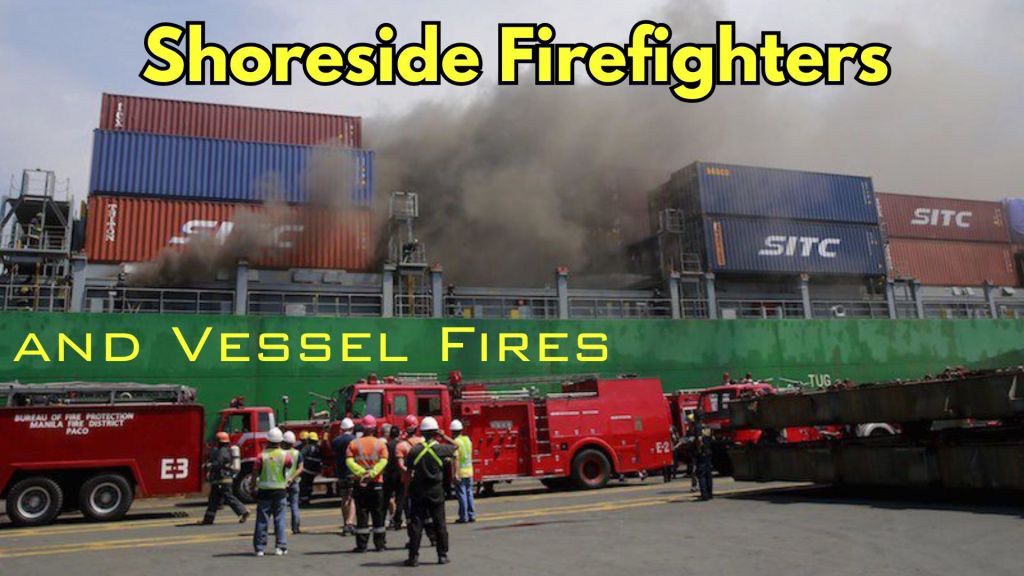
(www.MaritimeCyprus.com) Fire risks are a significant concern for all vessels and emergency preparedness is key to both fire prevention and mitigation. When vessels are docked in port, circumstances may escalate to a point where shoreside firefighters and their assets are needed to control and put out such fires.
Whether the crew intends to fight the fire by themselves or take initial actions while waiting for experienced, contracted marine firefighters to arrive, local firefighters usually respond. It is their community’s port and infrastructure, and they are dedicated to ensuring it is not damaged should the vessel fire get out of control. However, local firefighters can’t possibly be familiar with every vessel’s design and may have little or no training or experience in fighting shipboard fires. Therefore, vessel crews cannot assume that the first shoreside firefighters that arrive are appropriately trained and know how to fight a vessel fire.
Fighting fires on vessels is very different than fighting fires in the land-based structures for which shoreside firefighters are most experienced.
For example:
- A steel vessel cannot be vented like a wooden structure;
- Vent fans on vessels must be secured initially, or the forced air will feed oxygen to the fire;
- Firefighting water has to be removed or limited so as to not negatively impact vessel stability which can cause capsizing or sinking; and
- The steel construction of vessels traps and retains heat causing fires to burn significantly hotter than land-based structure fires. Vessel fires have been recorded to reach temperatures above 1000oF (538oC). In contrast, shore-based fires are characterized as “severe” thermal environments for firefighters when temperatures are between 300-400oF (149-204oC).

Additionally, shoreside firefighters may not be familiar with the operation of the vessel’s firefighting systems and equipment such as installed CO2 systems, sprinkler systems, foam systems, water fog systems, and the vessel’s fire main and pump arrangement. Shoreside firefighters also may not trust the vessel’s equipment and systems, even though the use of the vessel’s equipment may be the best firefighting approach.
The American P&I Club has published a guidance document “Shoreside Firefighters and Vessel Fires” which addresses this issue and you can access it below:
Source: American P&I club














